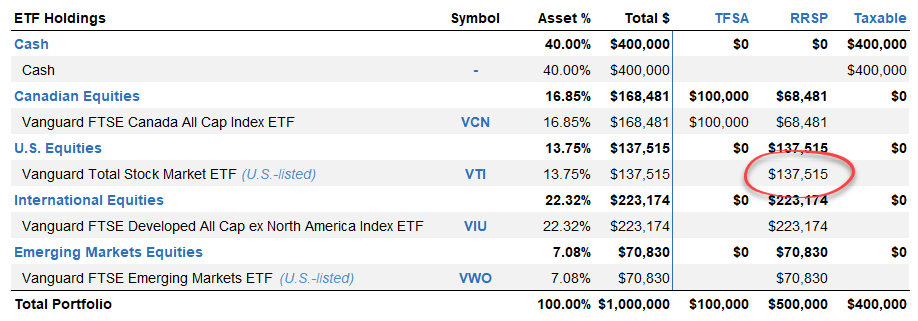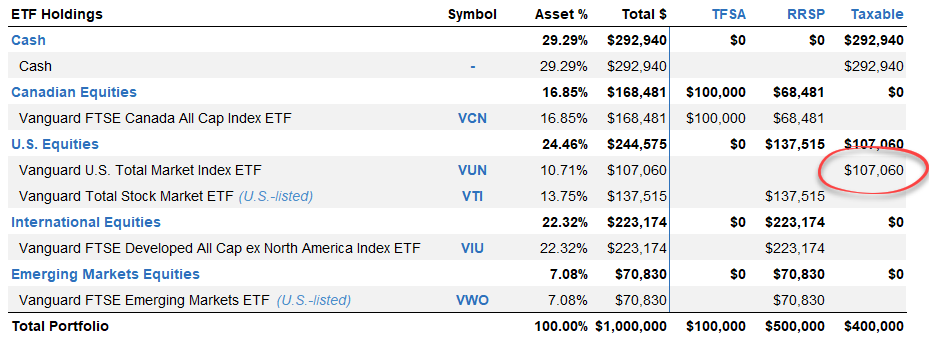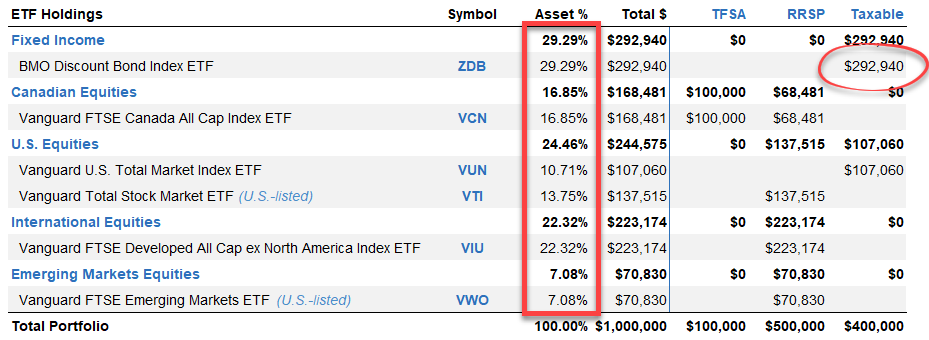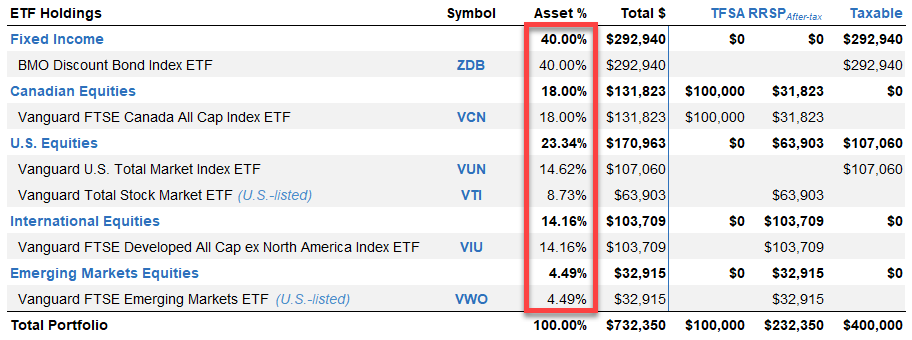In an epic scene from Spaceballs, Dark Helmet recklessly pushes his ship past Ludicrous speed and into Plaid. In the process, he way overshoots Lone Starr’s Winnebago Eagle 5, leaving a colourful, checkered display in his wake. Lone Starr’s co-pilot Barf marvels, “They’ve gone to plaid”.
Why “plaid”? I scoured the Internet, and found nothing definitive. Some fans suggest the plaid joke is a word play on the terms warp speed (i.e., faster than the speed of light) and the lengthwise warp or weft in a weave of thread. Warp + weft = plaid?
Well maybe. Another fan proposed it came from a 1950s Warner Bros. cartoon, “The Hypo-Condri-Cat”, where two mice, Hubie and Bertie, are messing with Claude, the hypochondriac cat. They worry him into turning green, then purple, and then (you guessed it) … Claude goes plaid. When Scottish bagpipes start to play, Hubie warns Bertie, “Don’t overdo it.”
Are you a Bertie investor, who loves to push the limits until you’re Looney Tunes? If so, today’s tour of our Plaid portfolios won’t overdo it for you. Even for those who are more cautiously Hubie-ish, if it’s anything like our Ludicrous discussion, it’s sure to generate more great questions.
Either way, let me know if you ever discover the true origin of Space Balls’ plaid reference. As we’re strictly evidence-based around here, only an original source will do.
Similar to the Ludicrous portfolios, the Plaid portfolios also employ the same ETFs from the Ridiculous portfolios, but with a different asset location strategy. Unlike the Ludicrous portfolios, the Plaid portfolios are truly structured for optimal tax-efficiency.
The basic idea is to hold all equities in your TFSA and RRSP first, and your taxable account last. Within your TFSA and RRSP, you’re free to let your creativity run wild, with numerous ways to arrange your ETFs to reduce foreign withholding taxes. I’ve outlined one such process in a mere 10 steps below. (Note, you may need to tweak the process, depending on your specific tax situation.)
Step 1. Determine the after-tax value of your RRSP. This is easier said than done. A fee-only financial planner should be able to run retirement projections and provide you with a reasonable tax-rate assumption. But since you can’t know for sure what your tax rates will be on future RRSP or RRIF withdrawals, the entire process is more theoretical than exact.
We’ll continue with our example of our top-rate Ontario taxpayer “Pat”, who has found another $1 million to play with – once again with $100,000 in a TFSA, $500,000 in an RRSP, and $400,000 in a taxable account. Let’s assume Pat is also expected to pay top rates on her RRIF withdrawals in retirement. Therefore, her $500,000 RRSP is worth only $232,350 after the government gets its cut.
Step 2. Using the after-tax RRSP value, calculate your total after-tax portfolio value. Pat would have a total after-tax portfolio value of $732,350 [$100,000 TFSA + $500,000 RRSP × (1 – 53.53% tax rate) + $400,000 taxable account].
Step 3. Calculate how much to purchase of each ETF from an after-tax perspective. For example, if you’re targeting 18% after-tax in Canadian equities, you would want to purchase $131,823 after-tax of a Canadian equity ETF, like VCN ($732,350 × 18%). I’ve included the after-tax asset class weights Pat would have targeted at the end of December 2018:
| Asset Class | Asset % (After-Tax) | Total $ (After-Tax) |
|---|---|---|
| Canadian Bonds | 40.00% | $292,940 |
| Canadian Equities | 18.00% | $131,823 |
| U.S. Equities | 23.34% | $170,963 |
| International Equities | 14.16% | $103,709 |
| Emerging Markets Equities | 4.49% | $32,915 |
| Total | 100.00% | $732,350 |
Step 4. Fill your TFSA with Canadian and international equity ETFs. Next, locate as many of your Canadian and international equity ETFs as you can in your TFSA. As dividends from Canadian stocks are not subject to foreign withholding taxes, they are a natural fit for your TFSA. A Canadian-based international equity ETF is also a great option for your TFSA. Since it holds the underlying stocks directly, it has the same foreign withholding tax drag in both a TFSA and an RRSP. Make sure you don’t exceed the after-tax target value for either your Canadian or international equity ETFs though. In our example, there is only $100,000 of cash available in Pat’s TFSA, so she won’t go over her target by purchasing either asset class.
In our example, I’ve assumed Pat purchases Canadian equities in her TFSA first, but international equities would also be acceptable.

Step 5. Add international equity ETFs to your RRSP. Here’s the trick to managing your portfolio’s after-tax asset mix: Gross up your after-tax target values when dealing with your before-tax RRSP. So, even though you ultimately need $103,709 of international equities after-tax, you’ll actually need to purchase $223,174 before-tax in your RRSP [$103,709 ÷ (1 – 53.53% tax rate)].

Step 6. Add emerging markets equity ETFs to your RRSP. The key here is to use a U.S.-based emerging markets equity ETF (like VWO or IEMG), to reduce your product costs and foreign withholding taxes. In other words, optimal asset location requires that you’re comfortable with the Norbert’s gambit process for cheaply converting from Canadian to U.S. dollars. As before, we’ll need to gross up the before-tax VWO purchase to $70,830 to create $32,915 of after-tax exposure [$32,915 ÷ (1 – 53.53% tax rate)].

Step 7. Add any remaining Canadian equity ETFs to your RRSP. In Step 4, we bought $100,000 in after-tax Canadian equity ETFs, but we still need to buy an additional $31,823 to complete this asset allocation ($131,823 – $100,000). As in our prior RRSP purchases, we’ll need to gross up the before-tax VCN purchase to $68,481 [$31,823 ÷ (1 – 53.53%)].
As Pat is a top-rate taxpayer in Ontario, U.S. equity ETFs are actually more tax-efficient than Canadian equity ETFs in her taxable accounts. That’s why we’ve left the U.S. equities for last. If you have a lower tax rate, you might want to swap Steps 7 and 8. Either way, you don’t have to perfect this decision in pursuit of an overall asset location benefit.

Step 8. Add U.S. equity ETFs to your RRSP. Before-tax, Pat would need to purchase $367,900 of U.S. equity ETFs in her RRSP to end up with $170,963 after-tax [$170,963 ÷ (1 – 53.53%)]. However, after Step 7, she only has $137,515 of cash available to invest in the RRSP. So, first, she can use all remaining RRSP cash to buy a U.S.-based U.S. equity ETF, like VTI. This will eliminate the 15% foreign withholding tax on U.S. dividends.

Step 9. Buy U.S. equity ETFs in your taxable account. The shares of VTI that Pat purchased in the RRSP in Step 8 are only worth $63,903 after-tax [$137,515 × (1 – 53.53%)]. This means she still needs to purchase $170,060 of after-tax U.S. equities in her taxable account ($170,963 – $63,903). Since there are no foreign withholding tax advantages of holding U.S.-based U.S. equity ETFs in a taxable account – and since Pat is ludicrously intelligent – I’ve assumed she purchases $107,060 of VUN.

Step 10. Finally (gasp!), buy tax-efficient bond ETFs in your taxable account. With the remaining cash in her taxable account, Pat would purchase the tax-efficient bond ETF, ZDB.

In Pat’s final Plaid portfolio, we find her before-tax asset allocation is nearly 70% equity, 30% fixed income. But as with her Ludicrous portfolio, looks can deceive. Once Pat cleverly adjusts for future taxes due on the ETFs in her RRSP, she is in fact invested in her intended 60% equity, 40% fixed income after-tax asset allocation.

Wow, can it get any more plaid than that? If we compare Pat’s balanced Plaid portfolio to any of our other models’ 2019 60/40 after-tax portfolios, it had the highest after-tax portfolio value and after-tax return ($828,690 and 13.15% respectively). Ludicrous was the only portfolio that beat Plaid, but remember, this was because it took more after-tax equity risk than all other portfolios. That is, it wasn’t actually an after-tax 60/40 portfolio.

Okay, that was exhausting. Who else feels like their brains have gone into their feet, and the sound of Scottish bagpipes is echoing in their now-empty head?
As with our other portfolios, let’s wrap with a review of the advantages and disadvantages of going to Plaid.
Advantages of the Plaid Portfolios
We’ve now reached the end of our portfolio journey. Our Plaid portfolios overshot the complexity of the rest of our models by about a million miles, so no one will blame you if you decide to stop and rewind. As I’ve said before, you can begin and end your adventures with a Light portfolio, and still be light years ahead of most DIY investors.
Then again, as your wealth (hopefully) accumulates, and your portfolio navigation skills mature, you may eventually want to accelerate your efforts.
Like astro-engineer Homer Hickman Jr. once wrote, “A rocket won’t fly unless somebody lights the fuse.” So, whether your personal preferences currently lean toward Light, Ridiculous, Ludicrous, or Plaid, I will continue to cover all our model portfolios in upcoming podcasts and videos. Subscribe to my podcast, and I’ll keep the fuse well-lit for your future adventures.